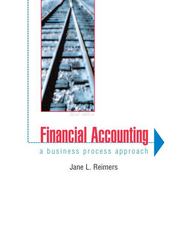Question
Question 1 Answer the following questions: (1) When performing a bank reconciliation, is the adjustment required to the bank statement an increase or a decrease
Question 1
Answer the following questions:
(1) When performing a bank reconciliation, is the adjustment required to the bank statement an increase or a decrease where there is an outstanding cheque to account for?
(2) Z Company has two bank accounts, A and B. A transfer is made from A to B. When performing extended cash procedures, would an auditor find Z's overall cash position overstated or understated when a transfer is recorded on or before balance date in account A but after balance date in account B?
(3) Would an auditor perform a review of subsequent payments because he/ she was concerned that a liability was over-stated or under-stated?
Question 2
(i) Complete the table below, which relates to An Ageing of Debtors (Aged Trial Balance of Accounts Receivable).
Aged Category: 0-30 days, Balance ($): 2,000, Estimated Allowance %: 2 , Estimated Allowance ($): A
Aged Category: 31-60 days, Balance ($): 400, Estimated Allowance %: B , Estimated Allowance ($): 20
Aged Category: 61-90 days, Balance ($): 200, Estimated Allowance %: 10 , Estimated Allowance ($): C
Aged Category: 91-120 days, Balance ($): 400, Estimated Allowance %: D , Estimated Allowance ($): 100
Aged Category: >120 days, Balance ($): E, Estimated Allowance %: 50 , Estimated Allowance ($): 100
Total of Balance($): F, Total of Estimated Allowance($): G
Find A to G
(ii) What does the auditor do with the critical figure determined in the above table?
Question 3
Specify a substantive test for each of the following.
(1) Occurrence of purchases transactions
(2) Completeness of sales transactions
(3) The existence of the accounts receivable balance
Question 4
For each of the following substantive tests, state one assertion that is tested:
(1) Vouch an entry in the Purchases Journal to the corresponding Receiving Note and Purchase Order.
(2) Perform a review of subsequent receipts.
(3) Compare the carrying amount of a line of inventory with its market price.
(4) Compare the ending balance of Accounts Payable with those of recent years.
(5) Perform an Ageing of Debtors.
Question 5
Classify the following as either type 1 or type 2 events for a firm with a December 31st balance date.
(i) A fire on January 18th caused a material loss of inventory that was not covered by insurance
(ii) One month before balance date, the firm entered into a contract to purchase a new item of plant and equipment for $1m plus the cost of installing the item. Installation was completed on January 20th.
(iii) On January 5th a currency in which some of the firm's sales contracts are denominated was depreciated.
Question 6
Answer the three questions below. For questions (i) and (ii) key dates are as follows: Balance date is June 30th. The Audit Report was signed on September 30th. The Financial Statements were issued to shareholders on November 4th.
(i) State three audit procedures required under ASA 560 if the auditor discovers that a material event took place on July 23rd.
(ii) Is the auditor required to undertake any audit procedures if he/ she was informed by management on October 9th that management intended to amend the financial report because of the bankruptcy of a major debtor on October 4th?
(iii) True or False. If an auditor provides a new audit report in relation to a subsequent event, it cannot be dated earlier than the date on which the directors approved the emended financial report.
Step by Step Solution
There are 3 Steps involved in it
Step: 1

Get Instant Access to Expert-Tailored Solutions
See step-by-step solutions with expert insights and AI powered tools for academic success
Step: 2

Step: 3

Ace Your Homework with AI
Get the answers you need in no time with our AI-driven, step-by-step assistance
Get Started


